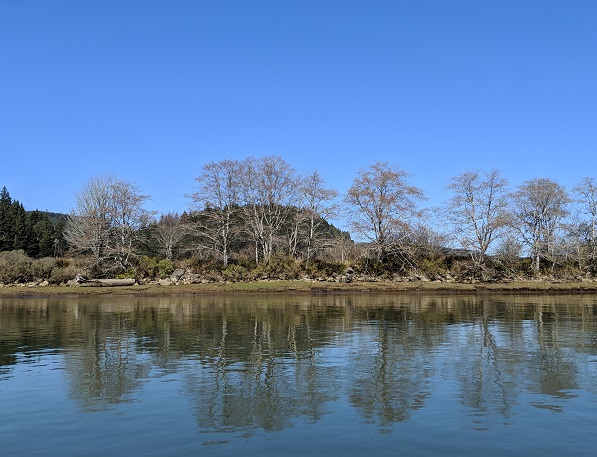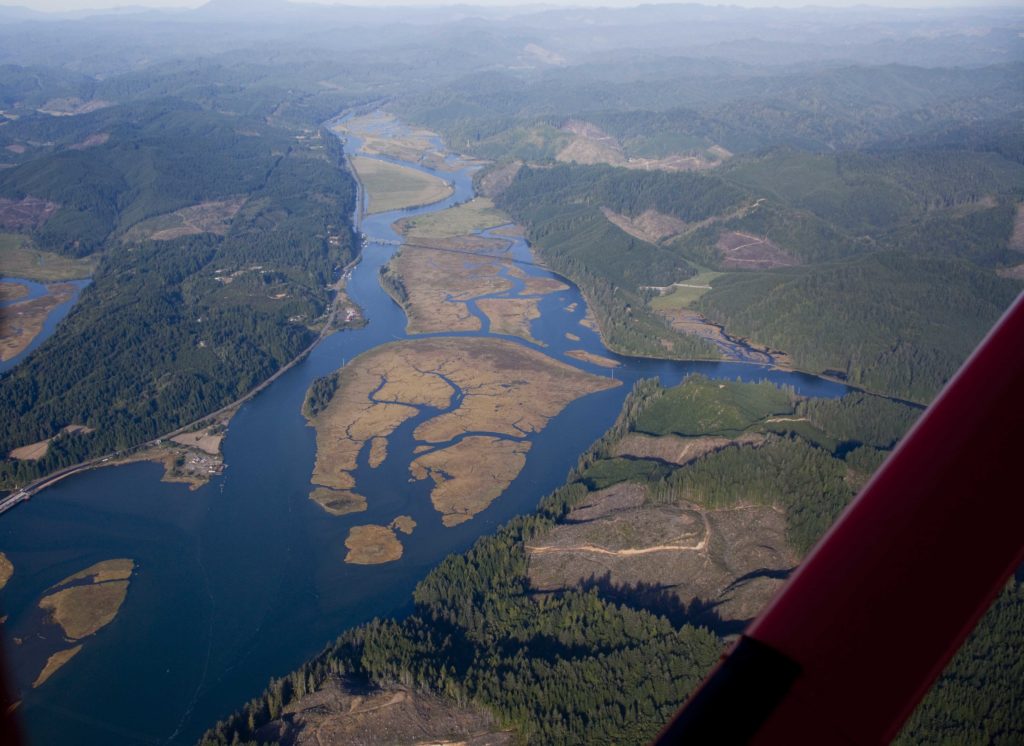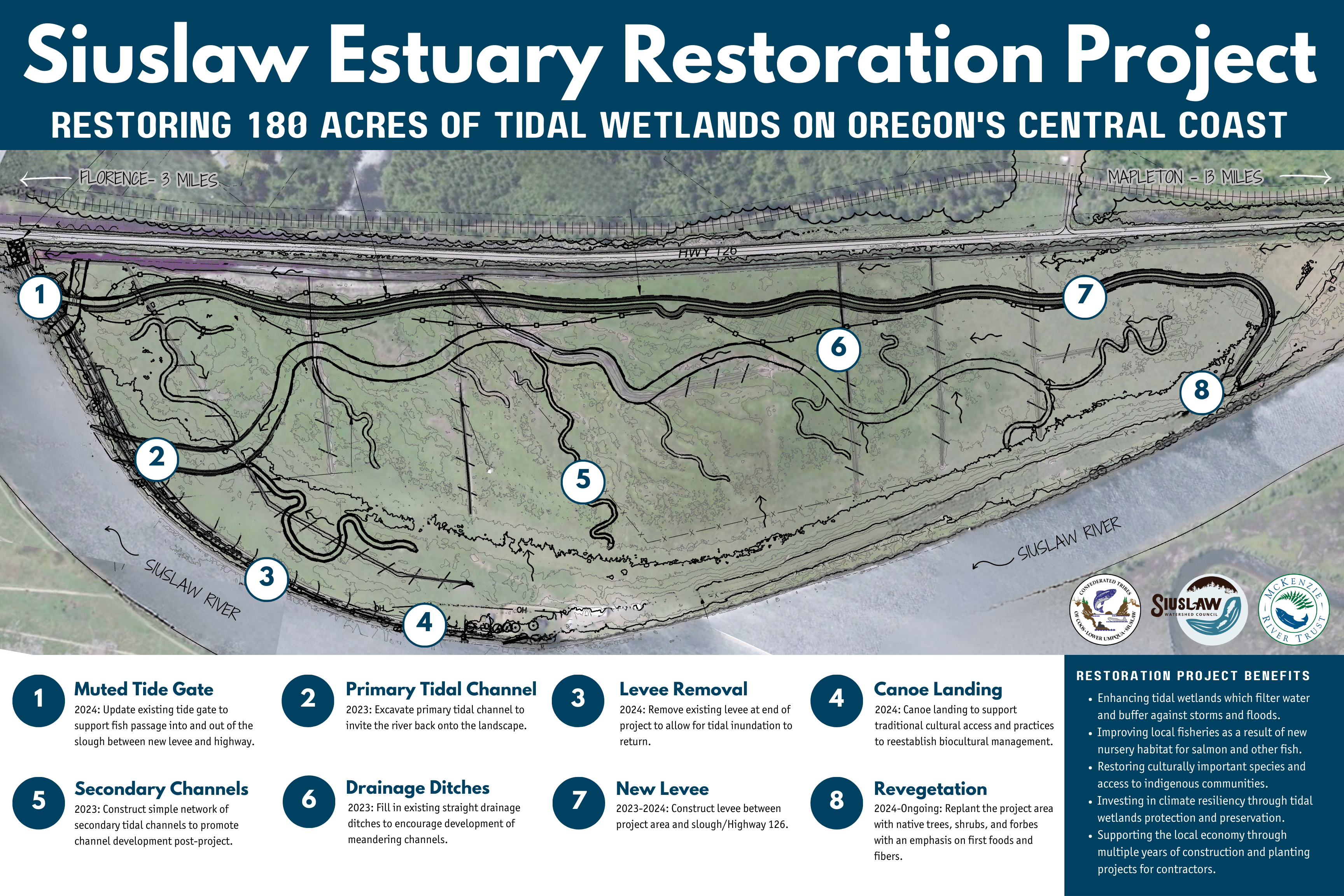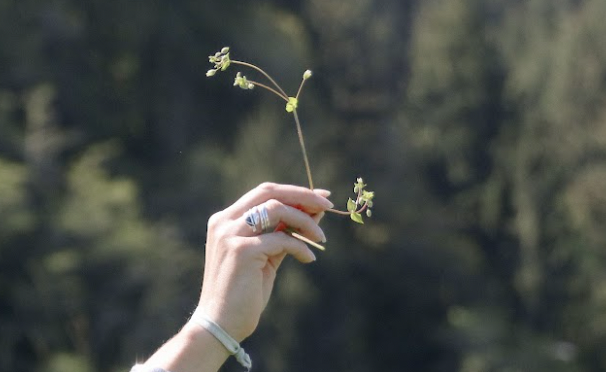Waite Ranch
Owned Property
The McKenzie River Trust purchased the property with funding from the Oregon Watershed Enhancement Board. OWEB also holds a conservation easement on the property.

Made up of deep tidal channels snaking through multi-layered vegetation and abundant woody debris, tidal swamps are now almost completely gone from our region.
Meet Waite Ranch
Why It’s Important
This historic estuary on the lower Siuslaw River just upstream from Cushman Landing has long been identified as a conservation priority. Historically, the property was home to emergent marsh and Sitka spruce and crabapple tidal swamps. Habitats like these once blanketed the estuaries of the Pacific Northwest. Made up of deep tidal channels snaking through multi-layered vegetation and abundant woody debris, tidal swamps are now almost completely gone from our region.
The Confederated Tribes of the Coos, Lower Umpqua, and Siuslaw Indians (CTCLUSI) and the Siuslaw Watershed Council (SWC), in conjunction with the McKenzie River Trust and other partners, will lead a major restoration project on the property in the coming years to restore the estuary and re-establish tidal exchange between the river and the property’s interior. Restoration will re-build the complex estuary ecosystem, benefitting native fish like coastal coho and Chinook salmon and steelhead, and many other sensitive birds and wildlife species.
Restoring tidal influence to 200 acres of land in the Siuslaw estuary.
Estuarine wetlands are among the most biologically and economically productive ecosystems, and, historically, the Siuslaw Basin was one of the most productive watersheds for anadromous fish in the Pacific Northwest. Since the 1850s, approximately 67% of Oregon’s outer coast estuarine habitat has been lost to land development, contributing to drastic declines in salmon and steelhead abundance. In the Siuslaw Basin alone, where agriculture, grazing and timber practices have degraded and reduced aquatic and riparian habitat, salmon runs are at less than 1% of the historic levels that were documented in cannery records on some years.

Among those historic estuarine losses is Waite Ranch. This 217-acre former dairy farm lies approximately three miles east of Florence, Oregon, located in the lower Siuslaw River estuary directly adjacent to the main river channel. Before being modified for agricultural uses with perimeter dikes, a tidegate, and drainage ditches, the property featured a tidal estuary, marsh, mudflats, and rare crabapple swamp, as well as uplands and associated riparian forest. After more than a century in operation as a commercial cow-calf and dairy farm operation, the non-profit McKenzie River Trust acquired the Waite Ranch property in 2010.

Waite Ranch Tidal Wetland Restoration Goals
Beginning in the summer of 2023, project partners are now leading a multi-year effort to reverse historic losses of estuarine intertidal aquatic bed, emergent marsh, estuarine intertidal scrub-shrub and forested wetland classes on Waite Ranch. The overarching goal is to restore approximately 200 acres of tidal wetland and recreate roughly six miles of high-quality feeding and rearing habitat for Oregon Coast Coho (Oncorhynchus kisutch), Chinook salmon (Oncorhynchus tshawytscha), steelhead (Oncorhynchus mykiss), and sea-run coastal cutthroat trout (Oncorhynchus clarkii), as well as other aquatic and avian species.
A central goal of the restoration project is to benefit local landowners and the community both ecologically and economically. The conservation benefits of the project include the enhancement of tidal wetlands which filter water and buffer storms and floods. Economic benefits of restoration include local multi-year construction and planting jobs for local contractors and stronger fisheries as a result of new nursery habitat for salmon and other fish.
Project work will include excavating new primary and secondary tidal channels, filling agricultural ditches, lowering the dike, and removing the tide gate — all actions that will reintroduce natural tidal influences to the property, aiding in sediment accumulation and new habitat development. Established principles of self-sustaining restoration design are being followed to ensure long-term project effectiveness and creation of a naturally-functioning, self-regulating ecosystem.

Waite Ranch Restoration Project Partners
Project Implementation Team
- Confederated Tribes of Coos, Lower Umpqua and Siuslaw Indians
- McKenzie River Trust
- Siuslaw Watershed Council
Supporting Partners & Funders
- Army Corps of Engineers
- Ecotrust
- Environmental Protection Agency
- Green Point Consulting
- National Oceanic and Atmospheric Administration (NOAA)
- Oregon Department of Fish and Wildlife
- Oregon Department of Transportation
- Oregon Watershed Enhancement Board (OWEB)
- South Slough National Estuarine Research Reserve
- The Port of Siuslaw
- US Fish and Wildlife Service
- US Forest Service
